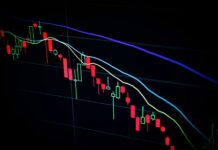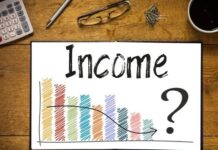
Investors always seek opportunities that strike a balance between income and growth. Dividend-paying equities serve as a popular choice for those wanting steady cash flow while preserving the potential for capital appreciation.
High-yield dividend stocks hold a special allure because they offer a compelling way to grow wealth over time. However, choosing the right investments requires more than just chasing yield. It demands a keen understanding of market dynamics and a practical approach to portfolio management.
Key Points
- Dividend-paying equities provide a dual benefit of income and capital growth.
- High-yield stocks may carry risks like unsustainable payouts or price volatility.
- Fundamental analysis is crucial to evaluate sustainability and long-term prospects.
- Diversification protects portfolios from sector-specific downturns.
Why Dividend Stocks Matter

Dividend-focused investing appeals to a wide range of individuals, including retirees looking for a steady income and younger investors seeking reinvestment opportunities. Companies distributing dividends often display financial health, signaling stability. For beginners, dividend-paying stocks are a stepping stone into equity markets without excessive reliance on price speculation.
The role of dividends becomes even more critical during periods of economic uncertainty. With fluctuating interest rates and inflationary pressures, they act as a buffer against market instability. High dividend-yielding stocks, particularly in sectors like utilities, energy, and real estate, serve as a solid foundation for any portfolio. For an updated list of the highest dividend stocks, check out TradingView.
Key Sectors for Dividend Seekers
Utilities and Infrastructure
Utilities are among the most consistent sectors. Companies providing essential services, such as electricity and water, generate predictable cash flows, even during downturns. Their dividends often remain unaffected by market cycles, making them attractive for conservative investors.
Real Estate Investment Trusts (REITs)

REITs offer unique advantages for dividend enthusiasts. Legally obligated to distribute a significant portion of their earnings, they provide consistent income. Commercial properties, residential buildings, and specialized assets like data centers or healthcare facilities offer diverse exposure.
Energy and Commodities
Energy firms often stand out for their high yield, particularly during periods of rising oil or natural gas prices. However, price volatility requires investors to remain cautious. Monitoring broader commodity trends and geopolitical developments ensures informed decisions.
Practical Steps to Build a Dividend-Focused Portfolio
- Define Your Objectives – Decide if you prioritize income generation, reinvestment, or a mix of both. Your goals determine your stock selection.
- Evaluate Financial Health – Review a company’s financial statements, focusing on revenue, profit margins, and payout ratios. A sustainable dividend payout is better than an unsustainable high yield.
- Diversify Across Sectors – Avoid concentrating your portfolio in one sector, even if it appears lucrative. Diversification mitigates risk and balances performance.
- Monitor Macro Trends – Keep an eye on interest rates, inflation, and GDP growth. Economic conditions influence sector performance and, consequently, dividends.
- Risks of High-Yield Stocks – Chasing high yields can backfire. Companies offering unusually high returns may face financial instability, risking dividend cuts or elimination. For example, a payout ratio exceeding 100% signals unsustainable practices.
Economic downturns can also disproportionately affect certain sectors. Energy and commodities, for instance, are highly cyclical. Investors must assess potential risks relative to their portfolio’s overall stability.
Common Mistakes to Avoid
- You are ignoring financial metrics like payout ratios.
- Overlooking dividend sustainability.
- Concentrating too heavily in one high-yield sector.
Long-Term Value Over Immediate Gains

Long-term wealth creation often outpaces short-term gains. Instead of aiming for the highest yields, look for consistent growth and stable payouts. Companies with a proven track record of raising dividends often signal robust business models. Such stocks offer a reliable stream of income without the heightened risks associated with excessive yields.
Diversification Strategies
Chart: Example Portfolio Allocation
Below is a sample histogram demonstrating sector allocation for a balanced dividend-focused portfolio:
| Sector | Allocation (%) |
| Utilities | 30 |
| Real Estate (REITs) | 25 |
| Consumer Staples | 20 |
| Technology | 15 |
| Energy | 10 |
Tools for Analysis
Retail investors benefit from tools simplifying complex metrics. Websites offering screeners allow filtering stocks by yield, payout ratio, and growth history. Look for platforms that integrate macroeconomic data to align stock selection with broader trends.
Fundamental analysis tools also provide a way to assess dividend sustainability. Metrics like earnings per share (EPS) growth, free cash flow, and debt-to-equity ratios form the foundation of sound investment decisions.
Dividend Growth vs. High Yield: Which is Better?

Choosing between dividend growth and high yield depends on your financial objectives. Dividend growth stocks often belong to companies with strong fundamentals, steady earnings, and a history of increasing payouts over time. These stocks provide long-term wealth accumulation and a hedge against inflation.
In contrast, high-yield stocks typically offer immediate income but may involve higher risk. For retirees or those seeking passive income, a high yield might be preferable. However, younger investors or those focused on reinvestment may benefit more from dividend growth due to compounding over time.
Tax Implications of Dividend Investing
Tax considerations play a critical role in dividend investing. Qualified dividends often enjoy favorable tax treatment, depending on your income bracket. Non-qualified dividends, however, are taxed as ordinary income, potentially reducing net returns.
Investors should consult a tax advisor to optimize their portfolio for after-tax income. Holding dividend-paying stocks in tax-advantaged accounts like IRAs can minimize tax liabilities while maximizing compounding benefits.
How Economic Cycles Impact Dividend Stocks
Dividend-paying equities perform differently across economic cycles. During periods of low interest rates, they become more attractive relative to fixed-income investments like bonds. High inflation, on the other hand, can erode purchasing power and pressure companies to adjust their payout policies.
Sectors such as utilities and consumer staples tend to remain resilient across economic conditions, offering stability to investors. Staying informed about macroeconomic indicators ensures that you can adjust your portfolio to align with changing economic realities.
Final Thoughts
Dividend-focused portfolios can be a smart way to achieve financial stability and growth simultaneously. However, success hinges on careful stock selection, risk management, and alignment with personal goals. Combining a strategic approach with consistent monitoring ensures your portfolio remains resilient against market fluctuations.
Prioritize sustainable yields and stay diversified. Whether you’re a seasoned investor or new to dividend-paying stocks, patience and informed decisions are your greatest allies.
















